
The Engine Control Module (ECM) has an on-board diagnostic system that detects malfunctions related to sensors, actuators, or emission control systems. The ECM also records various emission-related, diagnostic information.
PERMANENT DTC GROUP
Permanent DTC (P-DTC) is defined in SAE J1979/ISO 15031-5 Service $0A. The ECM stores a DTC which commands the MIL to turn ON at the same time a Permanent DTC is stored within the ECM.
Permanent DTCs cannot be erased by using the Erase function of CONSULT and CONSULT-III Plus or the Generic Scan Tool (GST) or by disconnecting the battery to shut off power to the ECM. P-DTCs may prevent a vehicle from passing the state emission inspection even if there is no malfunctioning part.
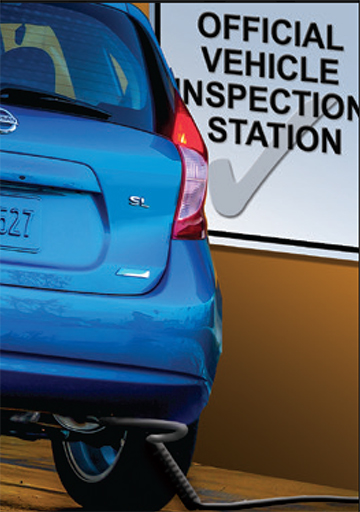
If a DTC repair is performed on a vehicle and a P-DTC is stored, there is a possibility that this may cause the vehicle to fail an emissions test if the P-DTCs are not erased before the customer’s vehicle is tested. This is not typical, but if the Inspection and Maintenance (I&M) station is evaluating the P-DTCs on the vehicle, it may fail the vehicle.
NOTE:
- Permanent DTCs do not apply for regions where Permanent DTCs are not regulated by law.
- In most cases, Permanent DTCs will erase when the customer drives the vehicle in his or her normal daily use if the repair has already been successfully completed.
Applied Infiniti Vehicles
(Vehicles that use Permanent DTCs)
Note: 2010 – 2014 MY applications shown in chart; all 2015 MY Infiniti vehicles use P-DTCs.
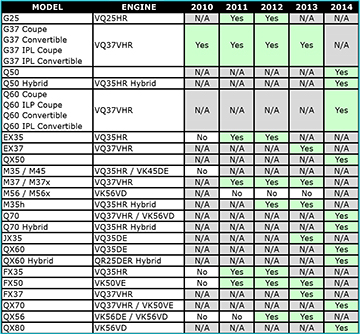
Applied Nissan Vehicles
(Vehicles that use Permanent DTCs)
Note: 2010 – 2014 MY applications shown in chart; all 2015 MY Nissan vehicles except LEAF use P-DTCs.
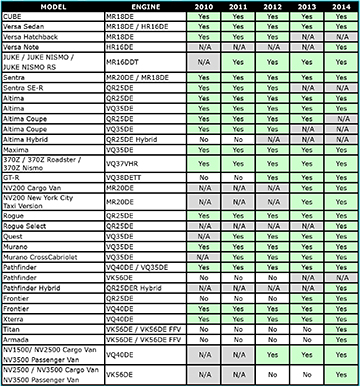
DTC INSPECTION PRIORITY
NOTE:
Before performing the following procedure, confirm that battery voltage is more than 11 volts at idle.
Perform trouble diagnosis. If DTCs are displayed, perform inspections in order based on the Inspection Priority Chart in the Service Manual. Repair or replace any malfunctioning parts.
NOTE:
After repairs are complete, command a code clear for all OBD modules before returning the vehicle to the customer. The vehicle may fail an Inspection and Maintenance test if P-DTCs are stored, the MIL is illuminated, or any SRT indicates incomplete. Therefore, it is important to check SRT (“CMPLT”), DTC (No DTCs) and P-DTC (No Permanent DTCs) before the inspection.
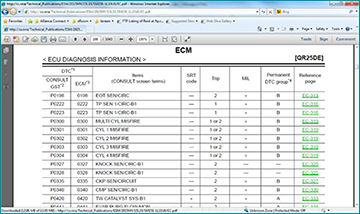
2014 Altima® Permanent DTC reference page example
NOTE:
The DTCs that require this special drive cycle are denoted in the Service Manual DTC Index in the “Permanent DTC Group *4” column. DTCs with “B” need the special drive cycle. DTCs with “A” do not require the special drive cycle.
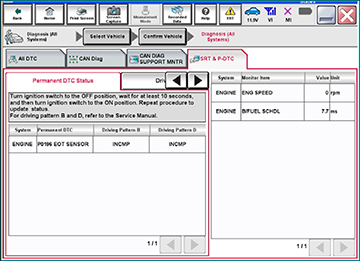
CONSULT and CONSULT-III Plus Permanent DTC status screen example
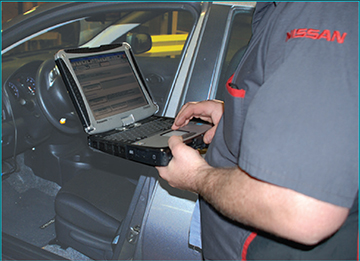
System Readiness Test (SRT) Diagnostic Flow Chart
If a vehicle has failed the state emissions inspection due to one or more SRT items indicating “INCMP”, review and follow the flow chart diagnostic sequence.
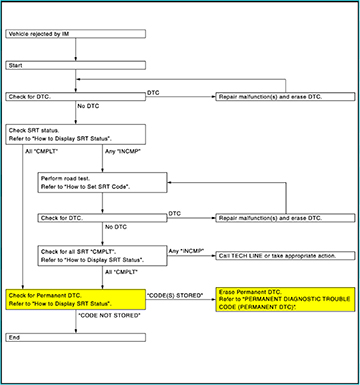
A vehicle that has P-DTCs stored could fail an Inspection and Maintenance test; therefore, verify the P-DTC(s) is erased before returning the vehicle to the customer.
How to Erase Permanent DTCs
To erase a P-DTC, the vehicle must be operated according to a specific drive cycle. The DTCs that require the special drive cycle are denoted with “Driving Pattern B” in the Permanent DTC Group column of the DTC Index in the ESM. Permanent DTCs can be erased by following the correct drive pattern.

THE TECHNICIAN IS REQUIRED TO COMPLETE THE FOLLOWING DRIVE CYCLE IN ORDER TO ERASE THE PERMANENT DTCS FOR CONTINUOUS-TYPE DIAGNOSTICS:
Driving Pattern B
- Engine speed reaches 400 rpm or more.
- Engine coolant temperature of 158°F (70°C) or more.
- Vehicle speed of 44–75 mph (71-121 kph) for 60 seconds or more.
- Vehicle speed of 19–37 mph (31-60 kph) for 10 seconds or more.
- 12 seconds or more with vehicle speed of 2 mph (3 kph) or less during an idling condition.
- Vehicle speed of 7 mph (11 kph) or more for 10 minutes or more.
- 22 minutes or more elapsed time after engine start.
NOTE:
- Drive the vehicle at a constant speed.
- When the above conditions are satisfied but the malfunction (DTC) is detected again, Driving Pattern B must be restarted on a new key cycle.
- When the above conditions are satisfied and the malfunction is not detected again, the P-DTC will be erased.